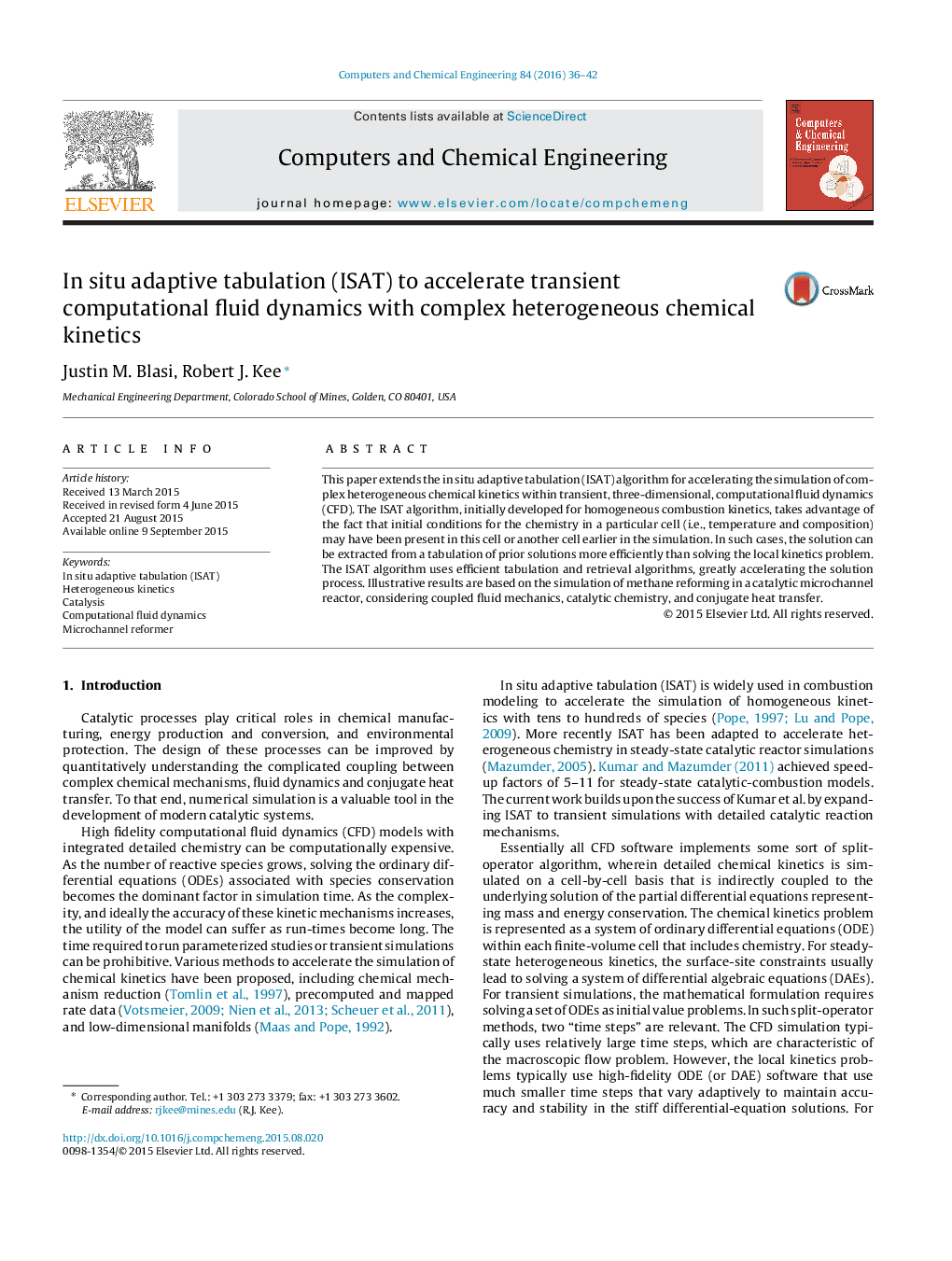| Article ID | Journal | Published Year | Pages | File Type |
|---|---|---|---|---|
| 172068 | Computers & Chemical Engineering | 2016 | 7 Pages |
•In situ adaptive tabulation (ISAT) is developed to accelerate modeling catalysis in CFD.•ISAT approach is integrated into ANSYS Fluent via user defined functions.•Approach demonstrated with 3D model of microchannel methane reformer.•ISAT reduces computation time by factors of 10–20.•Predicted results virtually identical to simulation without ISAT.
This paper extends the in situ adaptive tabulation (ISAT) algorithm for accelerating the simulation of complex heterogeneous chemical kinetics within transient, three-dimensional, computational fluid dynamics (CFD). The ISAT algorithm, initially developed for homogeneous combustion kinetics, takes advantage of the fact that initial conditions for the chemistry in a particular cell (i.e., temperature and composition) may have been present in this cell or another cell earlier in the simulation. In such cases, the solution can be extracted from a tabulation of prior solutions more efficiently than solving the local kinetics problem. The ISAT algorithm uses efficient tabulation and retrieval algorithms, greatly accelerating the solution process. Illustrative results are based on the simulation of methane reforming in a catalytic microchannel reactor, considering coupled fluid mechanics, catalytic chemistry, and conjugate heat transfer.
